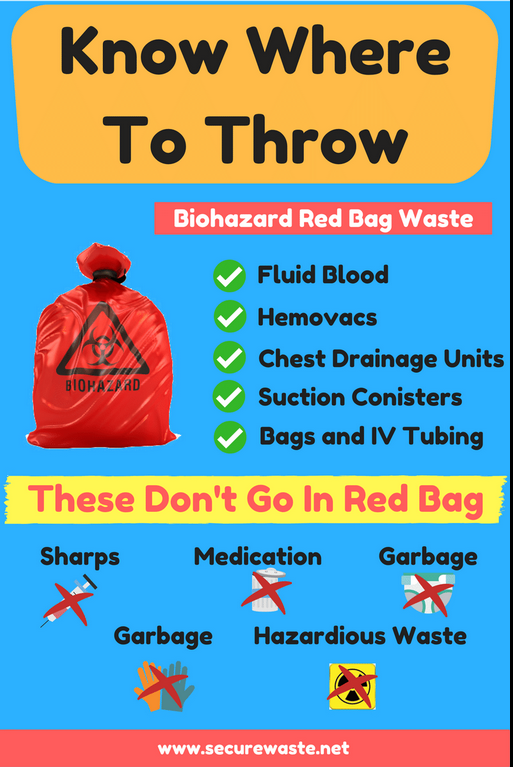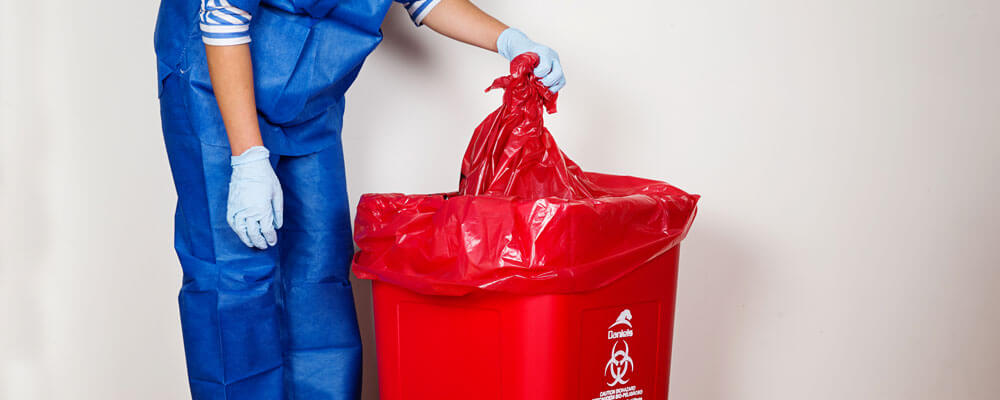Protecting Wellness: Revealing the Essence of Expert Medical Waste Removal
Protecting Wellness: Revealing the Essence of Expert Medical Waste Removal
Blog Article
Keep Ahead of Regulations: Professional Recommendations on Medical Waste Disposal
In a globe where the medical care industry is continuously progressing, it is essential for clinical centers to remain ahead of policies when it pertains to the correct disposal of medical waste. With strict guidelines and regular regulative adjustments, it can be testing to navigate the complexities of this process. However, with professional recommendations, centers can ensure compliance and mitigate risks associated with incorrect waste disposal. From recognizing the various classifications of medical waste to carrying out the ideal collection and partition techniques, this discussion will provide important insights and workable pointers to help facilities remain ahead of policies in the ever-changing landscape of medical waste disposal.
Comprehending Medical Waste Categories
Comprehending medical waste classifications is important for proper disposal and administration in healthcare centers. Medical waste describes any type of waste created by health care tasks that may present a risk to public health and wellness or the environment. It is vital to categorize medical waste accurately to guarantee its secure handling, disposal, treatment, and transportation.
There are numerous categories of medical waste that medical care centers require to be acquainted with. One of the most common classifications include contagious waste, pathological waste, sharps waste, pharmaceutical waste, and chemical waste. Each category has specific standards and regulations for its proper management and disposal.
Pathological waste refers to human tissues, organs, or body components that require unique handling and disposal. Drug waste comprises ended, unused, or contaminated medicines that require careful handling and disposal.
Remaining Up-To-Date With Regulatory Adjustments
Staying current with regulative modifications is important for medical care facilities to ensure compliance and appropriate administration of medical waste disposal. medical waste removal services. With guidelines continuously developing, it is important for healthcare centers to remain updated to prevent charges, fines, and potential injury to the atmosphere and public health
To stay ahead of governing adjustments, health care centers must develop a system for tracking and tracking updates. This can be done by registering for regulative newsletters, going to conferences and workshops, and proactively joining industry organizations. Furthermore, centers ought to designate a team member or group accountable for remaining informed and disseminating details to relevant stakeholders.
Normal communication with regulative agencies is additionally vital. Health care centers ought to develop relationships with local, state, and government firms to ensure they are mindful of any adjustments in policies that might impact their waste administration techniques. This can be done via regular meetings, engagement in public comment periods, and positive engagement with regulatory companies.
Additionally, medical care centers must consider partnering with waste monitoring business that concentrate on medical waste disposal (medical waste disposal services with WasteX). These firms are often skilled in the most up to date regulations and can offer advice and support to guarantee compliance
Carrying Out Correct Collection and Segregation Techniques
To successfully take care of clinical garbage disposal, healthcare facilities need to develop correct collection and partition approaches based on regulative standards. Executing these methods guarantees the safe handling and disposal of potentially dangerous materials, protects the atmosphere, and lessens the risk of infections and injuries to health care employees and the public.
Appropriate collection and partition methods involve using designated containers and classifying systems. Medical care centers ought to give plainly identified containers for different types of clinical waste, such as sharps, you can check here transmittable waste, pharmaceutical waste, and non-hazardous waste. These containers ought to be color-coded and clearly significant to stay clear of complication and promote very easy identification.
In addition, medical care facilities ought to educate their team on the correct procedures for accumulating and setting apart medical waste. This includes enlightening them on the different sorts of waste, the suitable containers to use, and the importance of adhering to guidelines and regulations. Normal training sessions and correspondence course must be conducted to make certain that employee stay up-to-date on finest practices.
In addition, medical care facilities should develop a system for regular collection and disposal of clinical waste. This might involve partnering with qualified waste administration companies that focus on clinical waste disposal. These firms will certainly guarantee that the accumulated waste is carried and dealt with in conformity with regulatory needs.
Selecting the Right Disposal Approaches

Incineration is among the most usual and reliable methods for throwing away certain kinds of medical waste, such as pathological waste and sharps. It includes the regulated burning of waste at heats, reducing it to ash. Incineration can release dangerous toxins right into the air and add to air pollution.

Chemical treatment includes the usage of chemicals to neutralize the waste and disinfect. Microwave treatment utilizes microwave energy to warm and sanitize the waste.
Making Certain Conformity Through Paperwork and Training
After meticulously taking into consideration the proper disposal approaches for clinical waste, medical care facilities have to ensure compliance with regulations and minimize environmental impact by carrying out medical waste disposal services with WasteX effective paperwork and training procedures. This step is essential in maintaining a lasting and secure atmosphere for both health care workers and the public.

Training is just as essential in making certain compliance with policies. Medical care employees who deal with clinical waste needs to receive suitable training on waste partition, taking care of, and disposal procedures. This training should cover topics such as the correct usage of personal protective equipment, recognition of various kinds of waste, and the appropriate disposal approaches for each and every waste category. By offering detailed training, medical care centers can empower their personnel to make educated choices and decrease the threat of inappropriate waste disposal.
Conclusion
To conclude, remaining in advance of guidelines in medical waste disposal is important for health care facilities. medical waste removal services. Comprehending the different categories of medical waste, staying upgraded with regulative modifications, executing proper collection and partition approaches, selecting the suitable disposal methods, and ensuring conformity with documentation and training are all essential actions. By complying with these guidelines, medical care companies can efficiently dispose and manage of clinical waste in a secure and accountable manner
From recognizing the different groups of medical waste to executing the right collection and partition methods, this conversation will give important understandings and actionable tips to aid facilities remain ahead of guidelines in the ever-changing landscape of medical waste disposal. - medical waste disposal services with WasteX
The most usual categories include contagious waste, pathological waste, sharps waste, pharmaceutical waste, and chemical waste. Health care centers need to give clearly labeled containers for different types of clinical waste, such as sharps, transmittable waste, pharmaceutical waste, and non-hazardous waste. Medical care centers ought to establish a thorough system to videotape and track all aspects of medical waste disposal, including types of waste generated, quantities, and disposal techniques utilized. Medical care workers who take care of medical waste ought to get suitable training on waste segregation, managing, and disposal procedures.
Report this page